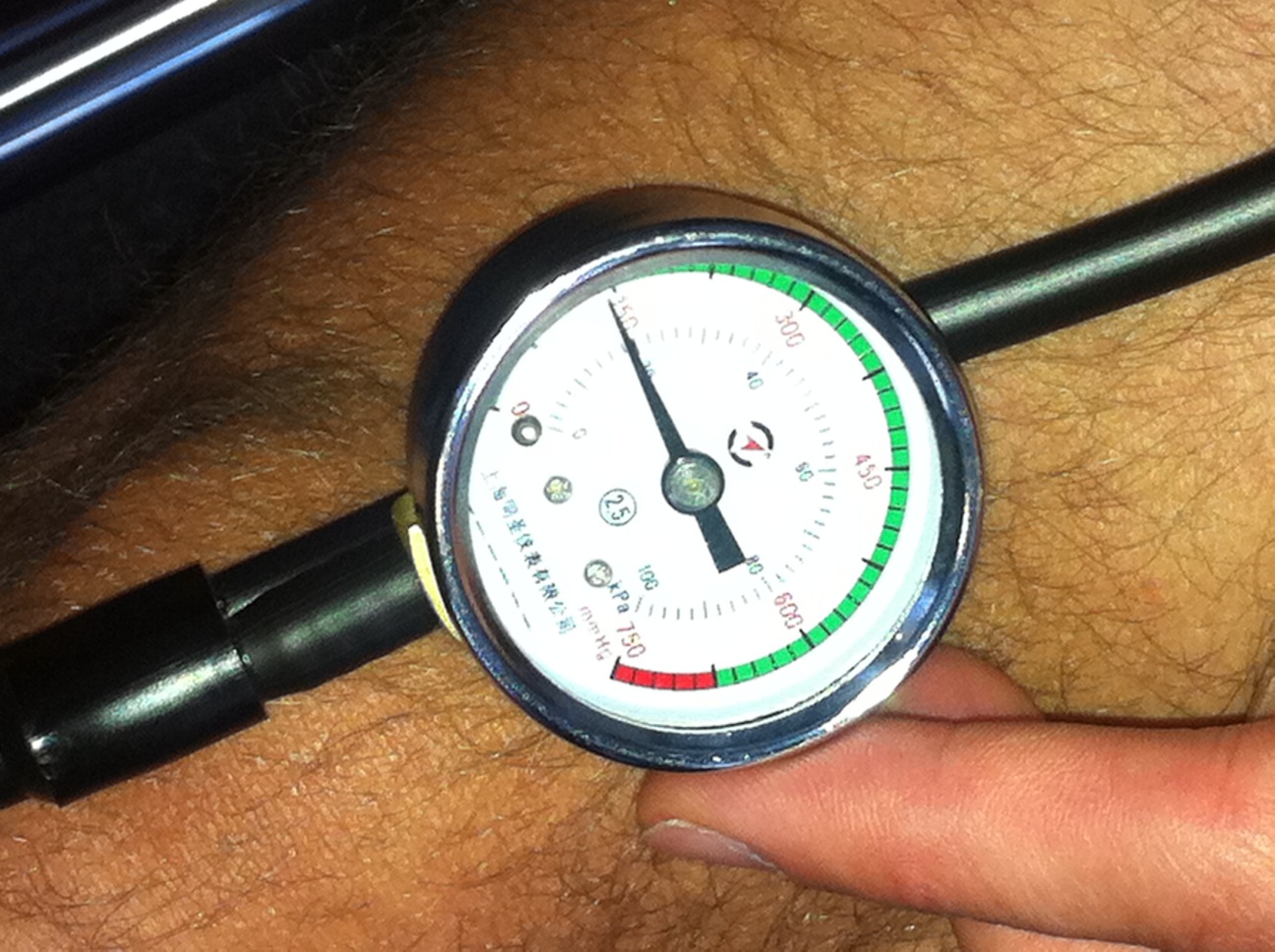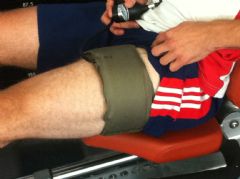Today, back in Lee Valley, I managed to catch up with Raph Brandon after a few weeks of me being away & Raph being busy at other sites. Raph is the Strength & Conditioning Lead for EIS & attends to UK Athletics’ needs twice a week.
One of the topics Raph has been looking into over recent weeks has been the use of occlusion training to regain muscle bulk & achieve recovery effects after training, whilst avoiding the onset of delayed onset muscle soreness.
To date Raph has been working on two different occlusion-based protocols BUT I must emphasise, both must be medically supervised.
1) 3 - 4 sets to failure, with a 30 second recovery between sets but no release of cuff pressure
This approach achieves massive revascularisation in addition to the exercise benefit
2) 3 - 4 sets of 15 reps, with a 60 second recovery between sets with the cuff pressure released
This approach is suited to high intensity strength training, allowing for increased volume with a second set later in the day. This is a gentler protocol that still achieves muscle bulk & strength improvements
 The cuff should be applied with the leg relaxed in
neutral hip flexion. The bladder valve
should be pointing down the femur, as high up the thigh as possible. The cuff pressure should then be increased to
150mmHg for exercise.
The cuff should be applied with the leg relaxed in
neutral hip flexion. The bladder valve
should be pointing down the femur, as high up the thigh as possible. The cuff pressure should then be increased to
150mmHg for exercise.
Given the
nature of the stimulus, the training is best conducted on a machine such as the
leg press, leg extension, calf raise or hamstring curl. With regards resistance with the leg press we
used 0.5 x 1 Rep Max, whereas with the single leg heel raise we used 0.5 x Body
Weight & for each exercise the cuff is applied at the top of the thigh.
Raph’s experience to date suggests that the first protocol (to failure) allows a maximum of two exercises, whereas the 15 rep protocol allows greater recovery & as a result all 4 machines can be used.
Personally, I
felt the 15 rep sets were much more tolerable from a mental perspective &
left me feeling much fresher after exercise, whereas I did feel that I had been
working a lot harder afterwards on the failure sets. Of the sets we tried, the norm on the failure
sets was over twenty on the first set, between 5 – 10 on the second set &
about 3 on the final set…followed by huge relief & a massive flush after
the pressure released.
We also discussed the use of occlusion training to
achieve a recovery benefit after doing a track session, using the 3 set to
failure protocol to achieve the extensive revascularisation & utilising the
elevated human growth hormone levels that are experienced post-exercise.
To read up more about occlusion training, click on the links below:
Gualano (2010) Resistance Training with Vascular occlusion in inclusion body myositis a case study
Loenneke (2009) The use of occlusion training to produce muscle hypertrophy
Sata (2005) Kaatsu training for patella tendinitis patient
Takarada (2000) Applications of vascular occlusion diminish disuse atrophy of knee extensor muscles
The BOA & English Institute of Sport have published guidelines aimed at managing the risk of working in a blood flow restricted state. Click on the link below to refer to these:
BOA/EIS Blood Flow Restriction: Managing the Risk

